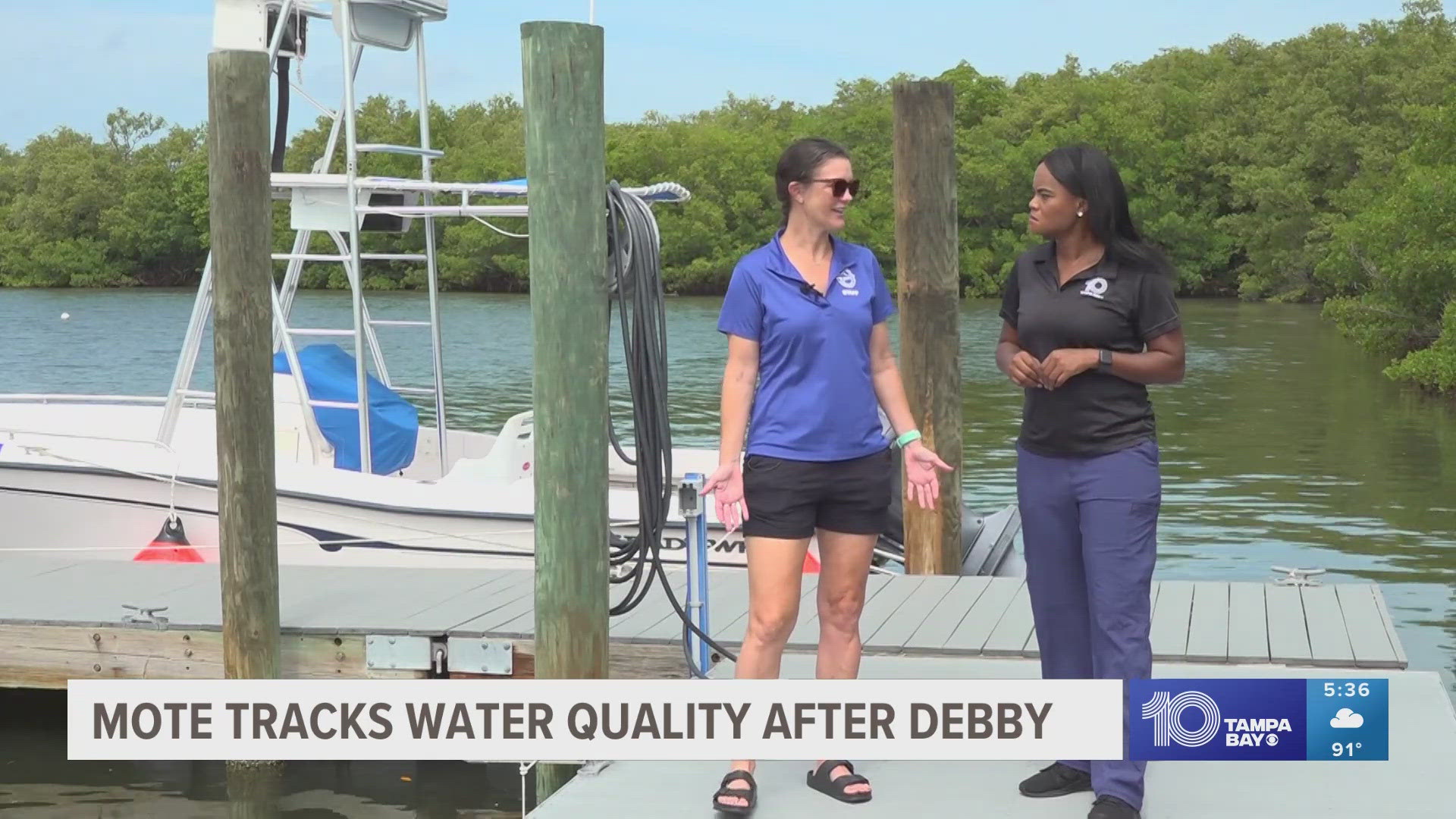SARASOTA, Fla. — A month after Hurricane Debby devastated homes, local scientists have uncovered the full extent of the storm's impact through the quality of the Sarasota Bay.
Mote Marine Lab researchers said Debby's passage through the Gulf of Mexico had significant ecological impacts on Sarasota Bay and its coastal environment.
"Humans are having an impact on our environment and we see that when we get these big storm events, cause we see what's running off into the bay," Dr. Emily Hall, manager of Mote's Ocean Acidification and Chemical and Physical Ecology Research program, said.
Hall and the team of researchers report higher-than-normal nitrate and ammonia concentrations, which can lead to increased bacteria and algal blooms. They also report elevated turbidity, which is reflected in the persistent darkened state of the water.
According to Hall, this prevents adequate light penetration.
"It can cause organisms to outcompete other organisms that normally wouldn't and we can see drownouts of seagrass," she said.
The insights from the study have raised concerns about survival in underwater habitats.
"These preliminary findings suggest that the storm has had a significant impact on water quality in Sarasota Bay. We are particularly concerned about the high nutrient and low dissolved oxygen concentrations, which could have serious implications for marine life in the affected areas," she said.
"If we start to see dead clams and crabs and organisms like that, that will really affect our system ecologically but also potentially economically," Hall added.
"It's the loss of the habitat, especially related to those storms. Also, it's the more armored sea walls that we have that are causing more erosion, the beaches getting smaller and smaller, and them not having other habitats to use," Melissa Macksey, senior biologist and conservation manager of Mote's sea turtle program, said.
According to Macksey, an estimated 1,200 of 3,000 sea turtle nests were lost during the storm in Sarasota County.
"Losing a nest for the turtles is like a home falling in the ocean and they're losing that energy that they put into that nesting process. But it's not just turtles. It's birds. It's everything that uses the beach, big and small," she said.
The scientists have called for all-around improvements to managing stormwater systems.
"The addition of mangroves, and having healthier seagrass beds really help alleviate some of those effects when you get stormwater flow. But you know, on land, we can prevent some of that stormwater flow going right into the bay as well, which will help you lessen the impacts," Hall said.
The researchers say they are going to keep monitoring the changes to water quality in Sarasota Bay, especially to the oxygen and nutrient levels. They would also be looking out for when the water starts regaining its signature aquamarine color.
They're also working with Sarasota County and urge people to pay attention to any water condition warnings to avoid health issues.

